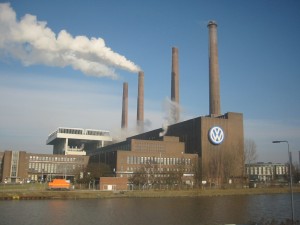 The industrial output across the common currency euro zone dropped at its steepest rate for a month in over 12 months during October. This highlights the continued fragility of the region’s economic recovery and supports the case that central banks need to provide further stimulus.
The industrial output across the common currency euro zone dropped at its steepest rate for a month in over 12 months during October. This highlights the continued fragility of the region’s economic recovery and supports the case that central banks need to provide further stimulus.
The $13.1 trillion regional economy was able to emerge for its recession during the second quarter of this year, but growth nearly ground to a complete stop during the recently ended third quarter and the outlook does not give a clear picture due to weak business and consumer confidence and record high rates of unemployment.
Industrial output across the 17 nations that use the same currency fell by 1.1% in October, its largest monthly fall since September of 2012, indicated the data on Thursday from Eurostat the statistics agency for the European Union.
Interest rates were cut by the European Central Bank to record lows in November of 0.25% due to a steep fall in the rate of inflation and the continued weak recovery. The central bank said it remained ready to provide further easing to shield the region’s growth and keep the rate of inflation on its projected path.
Year to year the output was up 0.2% during October.
The fall in monthly productions was led by the drop of 4% in the volatile energy output. That was followed by a decline of 2.4% in durable goods production including electronics and vehicles. Capital goods saw a decline of 1.3% in production.
In October, output in European refineries dropped by 6% on the year and was down over 7.9% for the month as most refineries conduct traditional routine maintenance during the third quarter. In addition, weaker profit margins made many cut the crude processing rates due to economic reasons during the year.
France, the second largest economy in the euro zone, saw its output fall by 0.3% for the month for the second straight month.
Ireland, which is coming out of its financial bailout, saw its production fall 11.6%, its worst performance in over one year.
